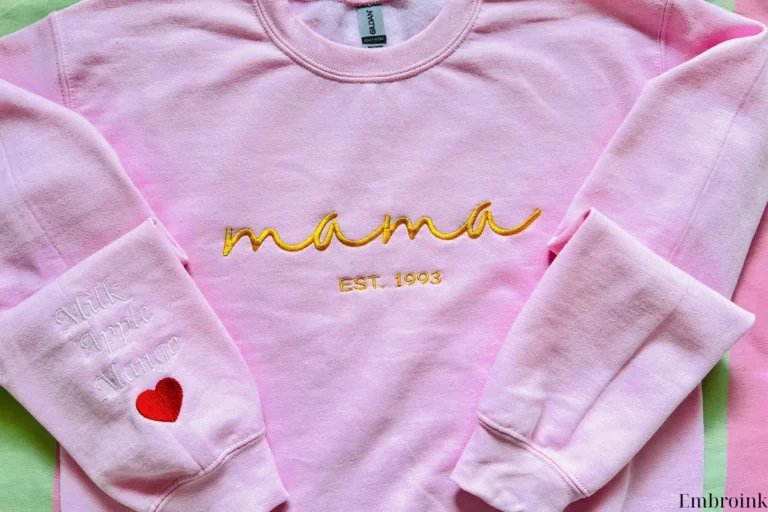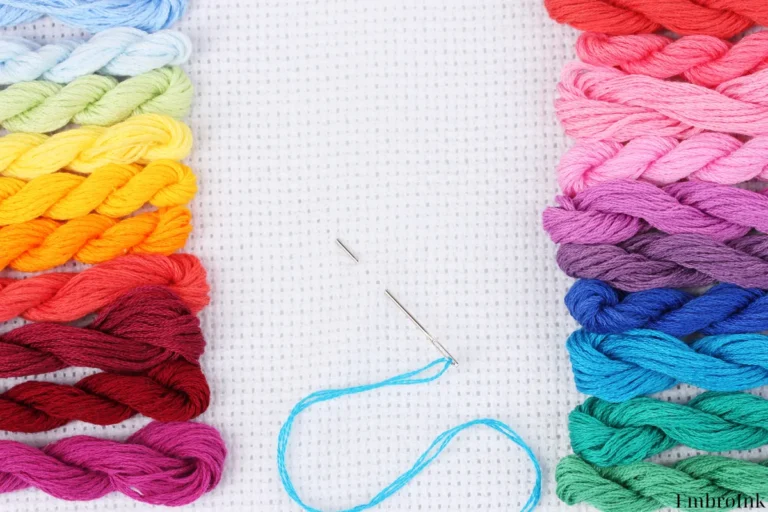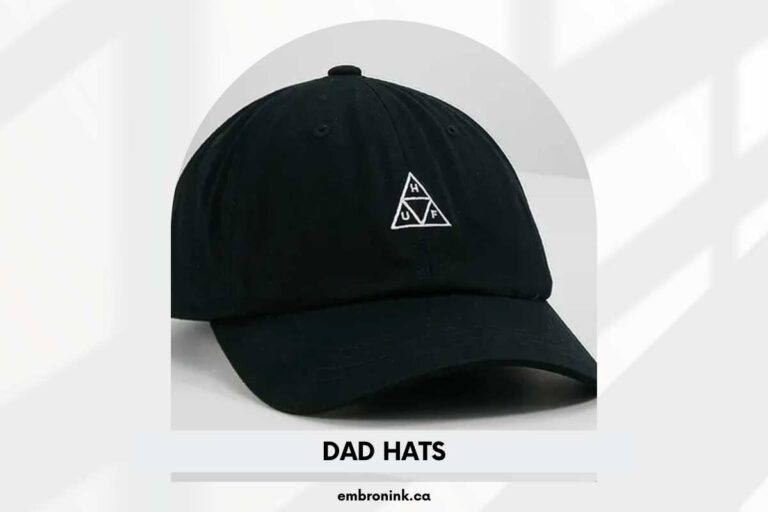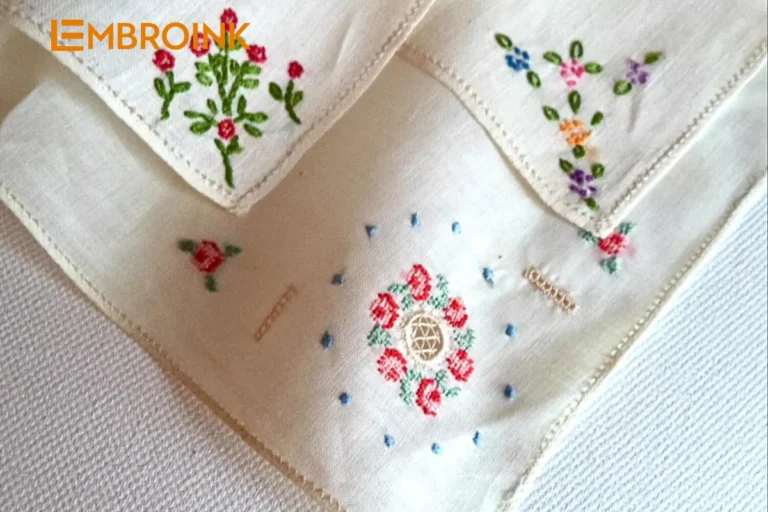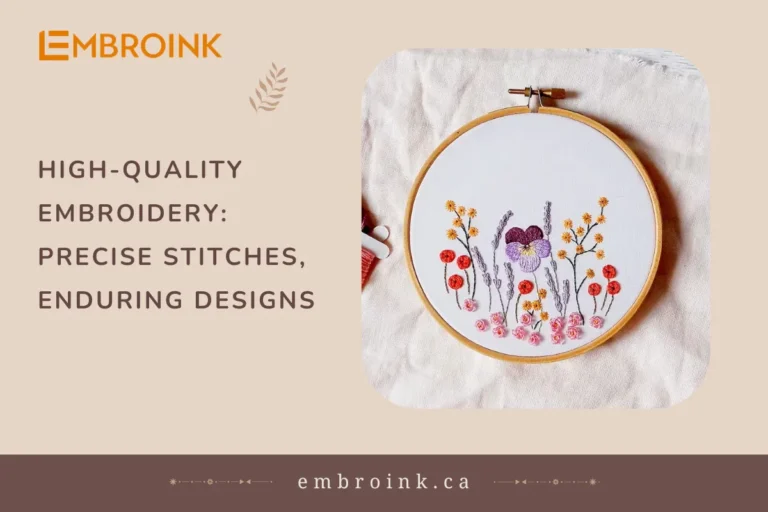What is sublimation printing?
Looking for vibrant, durable prints for everything from T-shirts to custom drinkware? Sublimation printing is the perfect solution! This versatile technique extends beyond fabric, enabling you to customize metal, ceramic, and even mouse pads. Get ready to explore the wonders of sublimation: we’ll cover its advantages and disadvantages, the best products for it, and how to leverage it for your print-on-demand success. Let’s join with EmbroInk.
What Is Sublimation Printing? How Does It Work?
Sublimation printing is a method that uses high heat and pressure to transfer designs from sublimation paper directly onto your chosen material or fabric. This process ensures that your artwork is embedded into the material, resulting in vibrant, long-lasting prints.

To achieve this, sublimation printing requires specialized ink, transfer paper, a heat press, and a specific type of inkjet printer. The heat and pressure work together to fuse the ink with the material, creating a permanent design.
Unlike traditional printing methods, where the ink sits on the surface, sublimation turns the inks into gas under heat, allowing them to penetrate the material. This creates a bond that is one with the fabric, leading to high-quality prints that are less likely to crack or fade over time.
Here’s how the sublimation printing process works:
- A dye-sublimation printer prints your custom design onto special transfer paper using sublimation inks.
- The paper is then placed onto a product, such as an enamel or ceramic mug, T-shirt, or other material, and both are placed in a sublimation heat transfer press, which applies intense heat and pressure simultaneously.
- The heat converts the inks into gas, which the material absorbs.
- The result is a permanent, vibrant print that becomes an integral part of the product, rather than simply sitting on top of it.
Sublimation vs. Screen Printing vs. Direct-To-Garment (DTG)
Sublimation, screen printing, and DTG each have unique strengths and weaknesses. Let’s dive into these popular printing methods to help you find the best fit for your business needs.
| Feature | Screen Printing | Sublimation Printing | Direct-To-Garment (DTG) |
|---|---|---|---|
| Print Quality | Strong color saturation with excellent quality, ideal for fluorescent colors and special effects. | Unmatched in quality with vibrant, permanent, and detailed prints. | High resolution with sharp details and full-color images. |
| Durability | Durable designs, but prone to fading and cracking over time. | Extremely durable; the ink bonds with the material, preventing cracks, peeling, or fading. | Comparable to screen printing in durability; designs resist fading and abrasion. |
| Color Scope | Best for simple designs with a few solid colors. | Full-color spectrum, perfect for vibrant images, patterns, and creative designs. | Wide range of vivid colors, capable of photorealistic designs. |
| Materials and Surfaces | Ideal for cotton shirts and blends, also works on metal, plastic, wood, and other materials. | Best on light-colored polyester and synthetic fabrics, also suitable for mugs and cork coasters. | Works well on natural fabrics like cotton; synthetics require pre-treatment. |
| Costs | More expensive for single orders. | Cost-effective for both single and bulk orders. | Low setup costs, but higher per-unit costs for small volumes. |
| Production Speed | Lengthy process requiring preparation and individual stencils for each design element. | Relatively fast; prints are produced quickly with heat pressing. | Slower, especially for bulk orders. |
| Design Complexity | Best for simple, bold designs with few colors. | Can handle nearly any design, including digital photos and complex patterns. | Excels with intricate designs and photorealistic images. |
| Environmental Impact | Non-biodegradable inks and potential waste from bulk printing. | Eco-friendly with non-toxic dyes and minimal waste. | Uses eco-friendly water-based inks, but pre-treatment chemicals may impact the environment. |
| Limitations | Best for cotton; not suitable for synthetic fibers or highly detailed designs. | Limited to light polyester fabrics; not ideal for dark or natural materials. | Not suitable for thick fabrics or non-absorbent materials. |
| Volume | Cost-effective only for bulk orders due to the setup process. | Suitable for both single and bulk orders with a straightforward process. | Ideal for low-volume and on-demand printing. |
| Washability | Can withstand many washes before fading or cracking. | Highly durable, resistant to fading, cracking, or peeling. | Washfast with proper garment care. |
- Screen Printing is perfect for bulk orders, particularly for events, charities, or occasions where you need multiple items. It’s best for simple designs with a few base colors on soft cotton fabrics.
- Sublimation offers a more flexible printing process, ideal for creative designs and both single and bulk orders. This digital technique provides highly durable, eco-friendly prints with vibrant colors and unique patterns.
- DTG is the go-to method for producing unique, small-batch garments with complex, photorealistic designs.
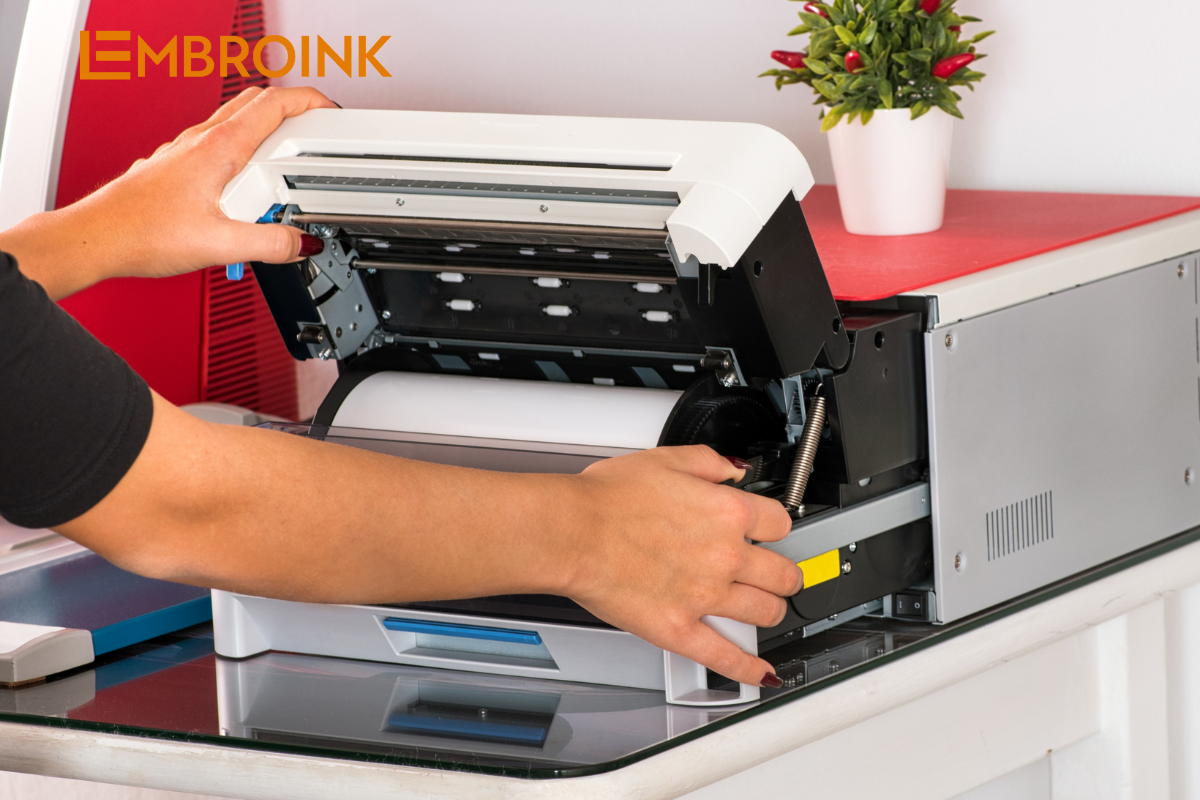
Where is screen printing used?
Screen printing is a highly versatile process that finds application across a wide range of products and occasions. It’s commonly used in apparel, making it perfect for custom t-shirts, sweatshirts, hoodies, and more. Beyond clothing, screen printing is also popular for creating promotional products like mugs and tote bags, offering businesses a way to brand everyday items. In the sports industry, it’s ideal for producing team jerseys and uniforms in bulk, ensuring consistent quality and vibrant colors. Additionally, screen printing is well-suited for banners and signs, whether for indoor or outdoor use, providing a durable solution for posters and large displays. The process can be effectively applied to almost any flat surface, making it a go-to method for various creative and commercial projects.
Where is sublimation printing used?
Sublimation printing is a digital method that excels in creating custom designs on a diverse range of products. It’s commonly used for apparel and accessories, including tees, hoodies, sweatpants, dresses, socks, and scarves. This method also extends to gaming and workplace accessories, such as mousepads and desk mats. In home decor, sublimation printing can personalize items like curtains, rugs, pillows, and blankets. Promotional products, including mugs, phone cases, and tote bags, benefit from its vibrant and durable prints. For sports gear, sublimation is ideal for uniforms, fan merchandise, and jerseys. Additionally, it’s a popular choice for wall art, encompassing posters, canvases, sigils, and banners.
Sublimation printing pros
- Unlimited Design Options: Nearly any color or complexity is possible, making it ideal for intricate designs.
- Versatile Application: Works on a variety of products, from shirts and curtains to coffee mugs and posters.
- Flexible Quantities: Suitable for both single items and large batches, with no minimum order requirement.
- Full Customization: Allows for complete personalization, one of the few methods that offer this level of flexibility.
- Durable Prints: Produces permanent designs that resist fading, cracking, and peeling for a long time.
- Vibrant and Seamless Prints: Creates vivid, unnoticeable prints that cover the entire surface, edge to edge.
- Eco-Friendly: A more environmentally friendly process compared to other printing methods.
Sublimation printing cons
- Material Limitations: Primarily works on polyester and polyester blends, limiting fabric choices.
- Color Restrictions: Requires white or light-colored blanks for optimal results, making it difficult to print on dark items.
- White Creasing: Any area left uncovered or out of reach during the process will remain white, leading to visible creases.
Is There White Ink in Sublimation Printing?
No, sublimation printing does not use white ink. The process relies on a CMYK color scheme, which cannot produce the color white. As a result, designs with white elements must be printed on light or white materials for the white areas to appear correctly. Sublimation printing is not effective on dark-colored products if white is part of your design.
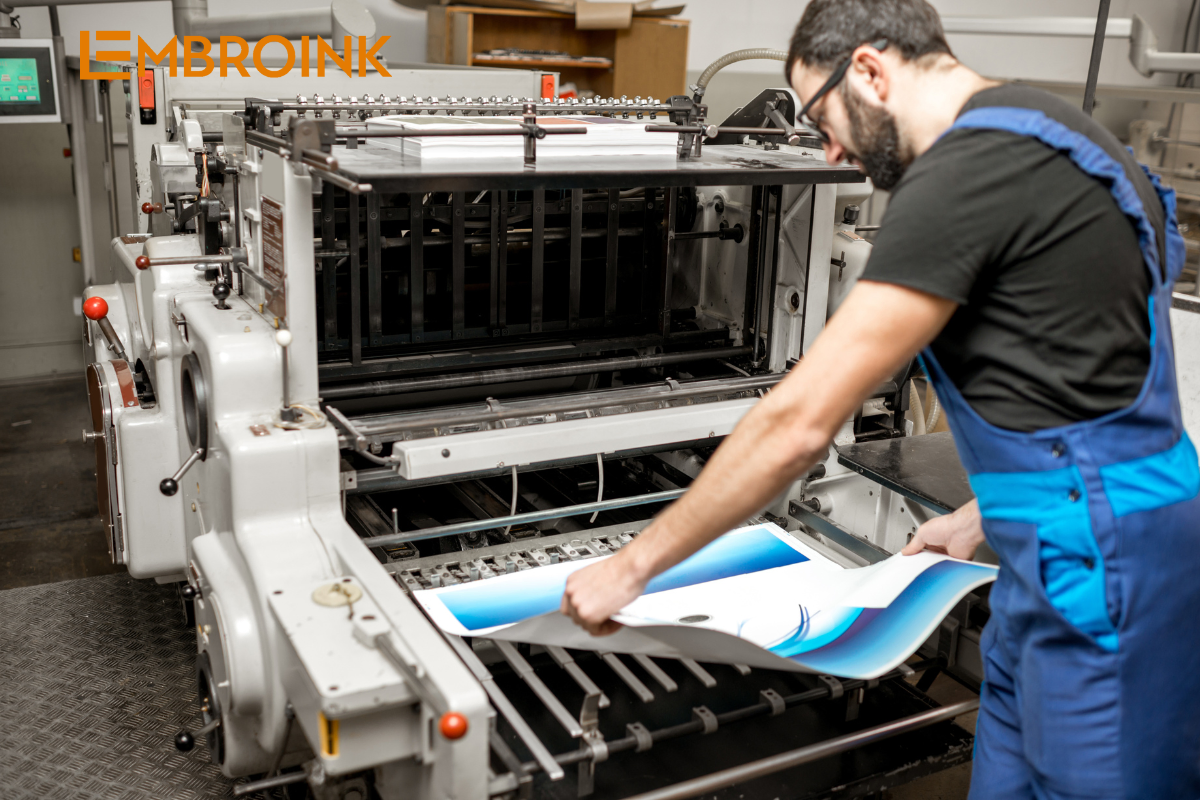
What Are the Best-Selling All-Over-Print Products?
All-over-print t-shirts and sweatshirts have long been favorites in the world of custom apparel, thanks to their versatility and the ability to showcase intricate designs across the entire garment. These items remain incredibly popular, offering a canvas for vibrant, eye-catching patterns that customers love. However, sublimation socks are emerging as a strong contender in this space, quickly gaining popularity due to their unique appeal and the growing trend for personalized, statement-making accessories.
Sublimation socks offer the perfect combination of functionality and style, making them a sought-after product in both fashion and gifting markets. If you’re looking to capitalize on this rising trend and boost your profits, it’s worth diving into the specifics of what makes sublimation socks so appealing and how you can effectively market them to your audience. For a comprehensive overview, including tips on design, pricing, and promotion, be sure to check out our detailed guide on selling sublimation socks. This resource will help you maximize your sales potential and stay ahead in the competitive custom apparel industry.
Designs That Work Well With Sublimation Printing
Sublimation printing stands out for its ability to handle bold, whimsical, and even outrageous designs with remarkable precision. This technique is exceptional at capturing intricate patterns and vibrant colors, which makes it ideal for creating truly creative and eye-catching products.
Whether you’re envisioning leggings adorned with dozens of bratwurst prints or dreaming up another equally imaginative design, sublimation printing offers virtually limitless possibilities. The process allows for full-color, detailed graphics that seamlessly integrate with the fabric, providing a durable and striking finish that’s perfect for unique, standout items. With sublimation, the only limit is your imagination, allowing you to push the boundaries of design and offer products that truly stand out.


